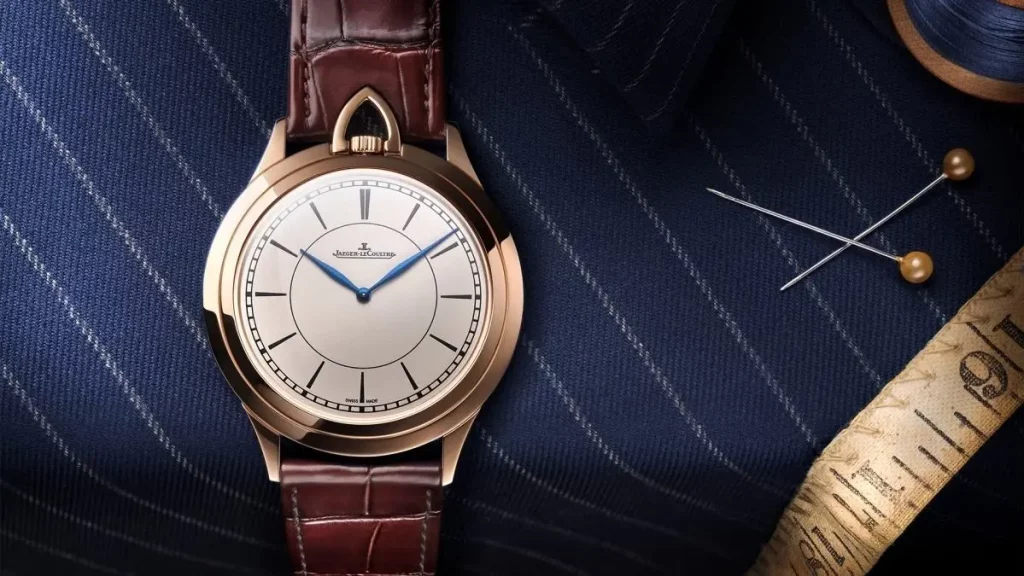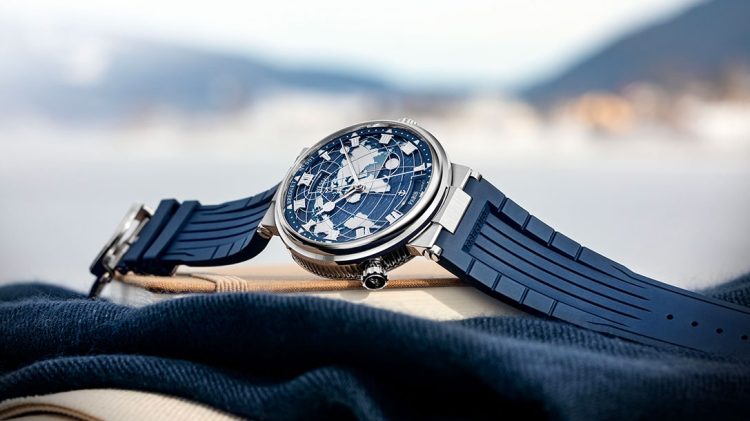Introduction: A Tale of Two Legends in Horology
When it comes to the world of high-end luxury watchmaking, few brands stand as tall as Jaeger-LeCoultre and Breguet. Both of these Swiss maisons have carved out distinguished histories, each influencing the horological landscape in profound ways. However, while their innovations, craftsmanship, and technological advancements have reshaped the industry, their cultural impact and lasting influence have left an indelible mark on both watch enthusiasts and the broader luxury goods sector.
In this article, we will explore how Jaeger-LeCoultre and Breguet have not only transformed the mechanics of watchmaking but also how they have shaped luxury culture, created iconic design trends, and fostered brand legacies that continue to reverberate through the industry today. Through examining their brand philosophies, iconic timepieces, and their cultural significance, we aim to uncover which of these watchmakers holds the stronger legacy in both watchmaking history and cultural influence.
Chapter 1: Jaeger-LeCoultre – The Watchmaker’s Watchmaker
1.1 The Birth of Jaeger-LeCoultre
Jaeger-LeCoultre, often referred to as the “watchmaker’s watchmaker,” is a brand that has played a pivotal role in the development of Swiss horology. Established in 1833 by Antoine LeCoultre in the Swiss village of Le Brassus, the company’s history is deeply rooted in the tradition of precision craftsmanship and innovation. Known for creating complicated movements, Jaeger-LeCoultre’s ability to design and produce in-house movements has helped the brand maintain its status as one of the most respected names in horology.
1.2 Pioneering Movements and Innovation
Jaeger-LeCoultre has consistently been at the forefront of watchmaking innovation. The brand’s creation of the Caliber 101, the world’s smallest mechanical movement, is just one example of its engineering prowess. Furthermore, the Reverso, launched in 1931, remains one of the most iconic timepieces in history. Its revolutionary reversible case and the introduction of various complications—from the tourbillon to minute repeaters—showcase Jaeger-LeCoultre’s relentless pursuit of functional innovation.
1.3 Cultural Impact and Branding
Jaeger-LeCoultre has earned a unique place in watchmaking culture not only because of its technical achievements but also because of its brand positioning. Often seen as a quiet achiever in the watchmaking world, Jaeger-LeCoultre’s identity has been rooted in refined luxury, offering a range of timepieces that balance function and elegance. The brand’s reputation among watch enthusiasts and connoisseurs is impeccable, cementing its place as a maker of “watches for watchmakers.”
In terms of cultural influence, Jaeger-LeCoultre has been particularly influential in creating iconic pieces like the Reverso and Master Control, which have consistently influenced the design direction of luxury watches over the years. The Reverso has transcended its origins as a sport watch for polo players to become a symbol of understated elegance and versatility—a timepiece that fits seamlessly into both formal and casual settings.
1.4 Jaeger-LeCoultre’s Presence in Popular Culture
Beyond its technical prowess and iconic designs, Jaeger-LeCoultre has also made a notable impact on popular culture. The brand has been featured in films, art exhibitions, and sports sponsorships, reinforcing its reputation for elegance and innovation. The Jaeger-LeCoultre Reverso appeared in several Hollywood films, enhancing its status as a symbol of luxury and sophistication. Furthermore, Jaeger-LeCoultre’s association with the art world, through collaborations with museums and exhibitions showcasing horological craftsmanship, has helped bolster its cultural significance.
Chapter 2: Breguet – A Legacy of Revolutionary Watchmaking
2.1 The Founding of Breguet
Founded in 1775 by the legendary Abraham-Louis Breguet, the house of Breguet is one of the oldest and most storied brands in horology. Breguet was an innovator and a pioneer, and his contributions to the world of watchmaking have left a profound impact on both the technical and aesthetic aspects of luxury watches. As one of the early inventors of the tourbillon and many other horological innovations, Breguet’s watches quickly became the preferred choice of royalty, aristocrats, and revolutionaries alike.
2.2 Groundbreaking Innovations and Iconic Timepieces
Breguet’s greatest influence comes from its legacy of innovations. Abraham-Louis Breguet’s invention of the tourbillon in 1795 fundamentally changed the design of mechanical watches. His other inventions, such as the perpetual calendar, self-winding movements, and Breguet hands, helped establish him as one of the foremost watchmakers of his era.
In addition to his technical innovations, Breguet’s timepieces were admired for their elegance and precision. The Classique and Marine collections remain highly coveted for their perfect balance of modern sophistication and historical craftsmanship. Breguet’s watches often featured distinctive fluted cases, Breguet numerals, and open-tipped hands, all of which became signature design elements.
2.3 Cultural Influence and Aristocratic Prestige
Breguet’s influence on luxury culture cannot be overstated. During the late 18th and early 19th centuries, Breguet watches were associated with royalty, aristocrats, and high society. Notable figures like Napoleon Bonaparte, Marie Antoinette, and Warren Buffett have owned Breguet timepieces, cementing the brand’s status as a symbol of luxury and prestige.
The brand’s involvement with figures of historical importance and its continuing appeal among collectors have contributed to its longstanding influence in the world of high-end horology. A Breguet watch, especially a Classique or Marine Chronograph, has long been a symbol of achievement and status, associating the brand with an elite cultural heritage.
2.4 The Continued Legacy of Breguet in Popular Culture
Breguet’s cultural relevance extends into the present day. Despite being over 200 years old, Breguet watches continue to make appearances in modern cinema, art exhibitions, and luxury collections. For example, Breguet is a brand of choice for discerning collectors and public figures, ensuring its place at the forefront of luxury watch culture.
Additionally, Breguet’s ongoing role in innovation and watchmaking artistry has maintained its position as a trendsetter. The brand’s commitment to blending historical traditions with modern design ensures its relevance in the contemporary luxury market.

Chapter 3: Comparing the Cultural Impact and Influence of Jaeger-LeCoultre and Breguet
3.1 The Role of Innovation in Shaping Culture
Both Jaeger-LeCoultre and Breguet have made groundbreaking contributions to the technical evolution of watches. Jaeger-LeCoultre has consistently pushed the envelope with innovations like the Caliber 101, Dual-Wing movement, and the Reverso, a design that has influenced countless watches since its creation. On the other hand, Breguet has become synonymous with high complications like the tourbillon and perpetual calendar, innovations that are now integral to the DNA of luxury watchmaking.
In terms of cultural impact, Breguet’s long history of association with European royalty and its role in revolutionizing horology in the late 18th and early 19th centuries have afforded it a unique position as one of the most historically significant watch brands. In contrast, Jaeger-LeCoultre has earned its place by providing exceptional technical versatility and becoming a preferred brand among modern collectors, especially those with an appreciation for functionality and innovation.
3.2 Aesthetic Influence – Design Philosophy
In terms of aesthetic influence, both brands have left their mark on the watchmaking world. Jaeger-LeCoultre is known for its clean, elegant, and functional designs, where every detail serves a purpose, and the brand’s minimalist approach to luxury has inspired many modern designs. The Reverso, with its Art Deco design and versatile case, has become a symbol of timeless elegance, influencing designs across various industries beyond horology.
Breguet, meanwhile, is celebrated for its classic, ornate designs—especially its fluted cases, Breguet numerals, and the distinctive hands. Breguet’s aesthetic influence is seen in high-end horology circles, where its design legacy is honored for its combination of technical complexity and elegance. The brand’s design philosophy continues to serve as a reference point for those who value classic watchmaking artistry.
3.3 Cultural Significance and Brand Identity
The brand identity of Jaeger-LeCoultre is often associated with a sense of refinement and understated luxury, while Breguet carries the weight of royal history, prestige, and exclusivity. Jaeger-LeCoultre’s watches are typically considered more versatile, blending seamlessly into various lifestyles and occasions, while Breguet’s pieces often carry an air of formal luxury, suited for the most elite and discerning customers.
Both brands are revered for their high-level craftsmanship and exceptional movements, but Breguet’s cultural significance leans heavily on its historical connection to aristocracy and global influence. Jaeger-LeCoultre’s cultural legacy, while equally rich, speaks more to its position as a technical innovator and a favorite among horology enthusiasts.
Conclusion: Which Brand Has Left the Stronger Legacy?
In comparing the cultural and technological influence of Jaeger-LeCoultre and Breguet, it’s clear that both brands have had a profound impact on the world of luxury watchmaking. Jaeger-LeCoultre represents modern innovation and versatility, appealing to those who appreciate functionality combined with elegance. On the other hand, Breguet’s centuries-old tradition of royalty, prestige, and historical significance makes it a symbol of exclusivity and luxury.
Ultimately, the answer to the question of which brand has had the stronger cultural influence depends on the lens through which you view the watchmaking world: Jaeger-LeCoultre leads with its innovations and modernity, while Breguet dominates with its historical gravitas and legacy of aristocracy.
Both are exceptional watchmakers, each representing the pinnacle of Swiss craftsmanship—one in the form of cutting-edge technologies and modern designs, and the other as a heritage brand with a deep connection to the history of luxury watchmaking.





































